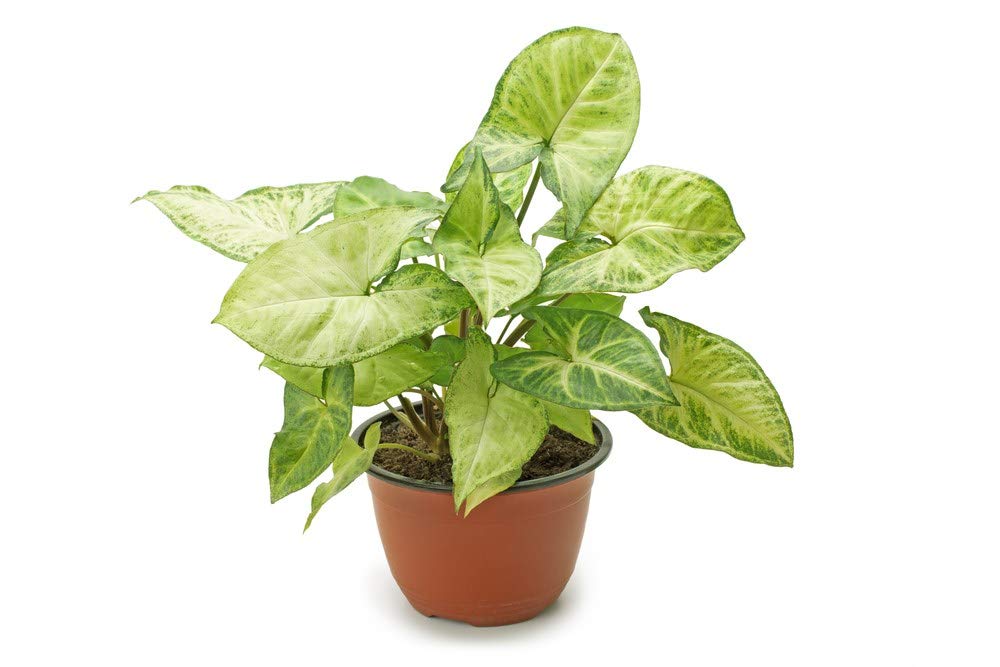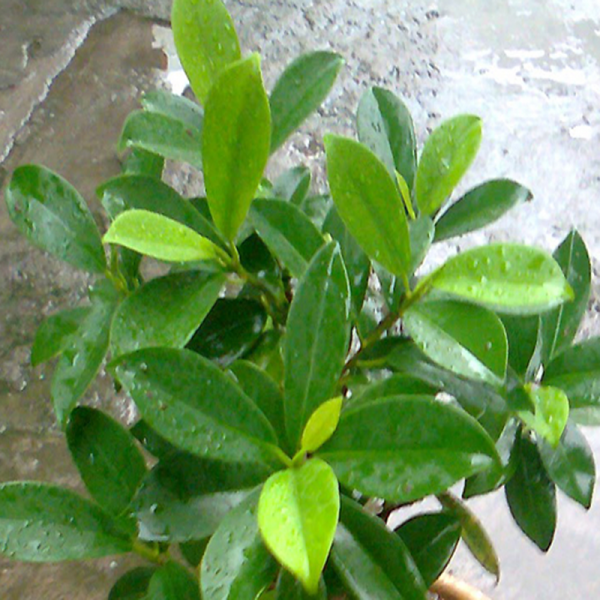The arrowhead vine is a pretty trailing or climbing vine that tends to grow quickly under the right conditions. Native to a wide region of South America, it has become a popular houseplant, thanks to its easy-going nature and appealing hanging shape.
The arrowhead vine’s leaf structure changes as it matures, going from a simple arrow shape to a deeply lobed or divided mature leaf. Its leaves can vary in hue depending on their age, ranging from dark green and white to lime green and bright pink. Arrowhead vine is only viable outdoors in USDA hardiness zones 10 through 12, so in most locations in the United States, it is grown year-round as a houseplant. The vine does best if left relatively alone, making it a great pick for novice gardeners or those who just forget to tend to their in-home garden frequently.
| Botanical Name | Syngonium podophyllum |
| Common Name | Arrowhead vine |
| Plant Type | Vine |
| Mature Size | 3–6 ft. tall, 1–2 ft. wide |
| Sun Exposure | Partial shade |
| Soil Type | Moist but well-drained |
| Soil pH | Neutral to acidic |
| Bloom Time | Summer (rarely flowers) |
| Flower Color | White |
| Hardiness Zones | 10–12 (USDA) |
| Native Area | South America, Mexico |
| Toxicity | Toxic to dogs and cats |
Watch Now: How to Grow the Arrowhead Vine (Syngonium podophyllum)
Arrowhead Vine Care
Arrowhead vine is a relatively easy houseplant to care for—it will thrive under the same conditions as its very popular relative, the philodendron. Arrowhead vines are climbers in the wild and will eventually grow from shade into full sun in the canopy of trees, with leaves maturing and gaining size as the plants gain altitude. As a houseplant, they’re often used as trailing plants once mature and can be trained up a pole or moss stick for added visual interest. Alternately, you can pinch new growth to maintain the young plant’s upright stems.
Tropical in nature, arrowhead vines are perfect for a sunroom or greenhouse conservatory where ample heat, light, and humidity will encourage their growth. Provide your arrowhead vine with the right growing conditions, and you will have a lush and healthy plant.
Light
Arrowhead vine likes bright light but no direct sun. Diffused light is best, as harsh rays can burn or bleach the delicate leaves and vines. Variegated colorways can handle a bit more direct sun, while deeper green varieties are better adapted to partial shade.
Soil
Plant your arrowhead vine in a traditional soil-based potting mix. Arrowhead vines are prone to root rot, so you’ll want to make sure whichever potting soil you choose is well-draining. Additionally, consider planting your vine in a terracotta or clay vessel to wick away extra moisture from the soil.
Water
Water your arrowhead vine regularly during the spring and summer months, and reduce your watering cadence come winter. During the spring and summer, you want to allow your vine to dry out partially between waterings but never completely. Likewise, the plant should not be kept too wet, either.
Temperature and Humidity
True to its tropical nature, arrowhead vine prefers warm and humid conditions. If possible, maintain temperatures above 60 degrees Fahrenheit. While the plant can tolerate average humidity, it will thrive best with added moisture in the air. Consider keeping your plant somewhere in your home with naturally higher humidity (like a kitchen or bathroom), or utilize a method of increasing humidity, like a portable machine or placing a bed of wet river rocks beneath the pot.
Fertilizer
Feed your arrowhead vine once a month with liquid fertilizer throughout the spring, summer, and fall months. You can halt feeding throughout winter when the plant will naturally slow its growth.
Propagating Arrowhead Vine
Arrowhead vine plants root readily from stem cuttings and can easily be propagated in the spring or summer months. If your plant has aerial roots along the stem, take a section of the stem with attached roots to increase your odds of success.
To propagate arrowhead vine, place your cutting into a glass of water—within a few weeks, you’ll notice new roots have begun to form. Wait at least a month until the roots have strengthened, topping off the water periodically. At that point, you can plant the cutting into the soil as you normally would.
Potting and Repotting
These plants are aggressive, rapid-growing vines, so the frequency of repotting depends somewhat on how big you want the vine to get. Repot yearly for a larger vine. Otherwise, refresh potting media every spring and repot every other year to ensure the plant does not become root-bound.
Common Pests and Plant Diseases
Arrowhead vine is relatively resistant to pests on its own. However, dwelling in the home amongst other plants can expose it to pests like spider mites, mealybugs, aphids, and scale. If you notice any of these afflictions, treat your plant immediately with neem oil or another natural solution.





Reviews
There are no reviews yet.